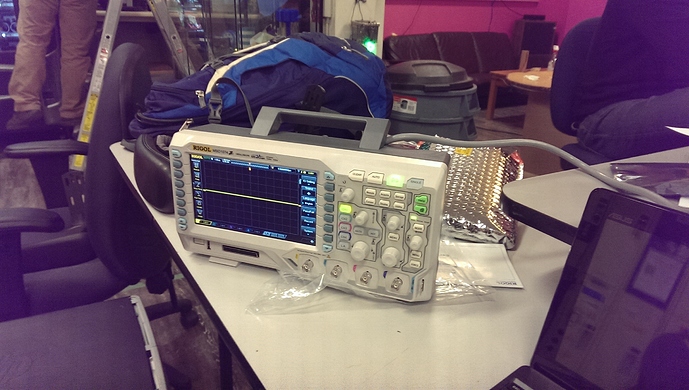So it can be eventually hacked to be faster / stronger / better, but let’s wait until we’re a little further into the warranty, yeah? ![]()
Post-mortem:
The total cost came out to the equivalent of $1085CAD.
The Tilt was $435, and Tim offered to kick in an additional $100 for the
MSO.
So VHS cut a cheque to him for $985, although $200 of that was his money
that he’d already donated a few months ago for this purpose.
The Tilt funds were given to VHS directly as cash to cut out Paypal fees
and such.
I also put in $35, Jon $10, Rob $45 (who put a bunch into the Tilt, too),
Tom Keddie $50.
So VHS’s contribution is $985 - ($200 + $435 + $35 + $10 + $45 + $50) = $210
This wouldn’t have happened without the mass of people that donated through
the Tilt, so good work, team! This is awesome, the kind of thing that makes
me stoked about the people at VHS ![]()
And huge thanks to Tim, who did the bulk of the work here.
Without getting all preachy as I’m sure most of you know this, but in order
to help this thing have a long and productive life at VHS, I have a few
commandments:
- Do not measure grounded circuits unless you know what you’re doing. That
usually means that any AC signal from the wall is a no-no. Our DC supplies
and cellphone chargers should be okay. The scope is earth-grounded, which
means that if you clip the ground lead of a probe to a portion of AC that
is not grounded, then you will cause significant and irreversible damage
to the scope or probe or both.
- Do not take the front hook of the oscilloscope probes off. If you need
to measure a breadboard, clip onto a small jumper and plug the wire into
the breadboard. If you cannot definitively say, “The inductance of this
wire is preventing me from properly measuring this waveform”, then you
can use a jumper without affecting your measurements. I say this because
I’ve seen people pull off the cover and try to jam the needle of the probes
into breadboard sockets, and that’s not what they’re designed for and
damage them, like, every time.
-
Coil up the probes carefully and place them on top of / behind the scope
when you’re done. They are expensive and delicate precision coaxial cables
and should be treated accordingly. -
Turn off the scope when you’re done with it. Electronic components have
limited lifetime and go out of calibration, etc. It’s cool to keep it on
for a few hours when you’re debugging a difficult project or whatever, just
turn it off when you leave
If you see someone treating the scope without the respect appropriate for a
$1000 tool, take that as an opportunity to educate them in the nicest way
possible, because there’s no malice on their part. Everybody has to learn
somehow.
Sorry, that did turn out kind of preachy. I just like having nice tools and
want to keep them nice so that we can all do cool stuff ![]()
Added new pages to the wiki:
https://vanhack.ca/doku.php?id=tool:logic_analyzer
https://vanhack.ca/doku.php?id=tool:oscilloscopes
https://vanhack.ca/doku.php?id=tool:rigol_mso1074z
If someone would be so kind as to educate me in person (ideally on an actual appropriate circuit) I’d be more than happy to donate $20 to what seems like a deficit (I assume to Tim?)
I missed the initial donation; but thanks to you all for making the space all the much more awesome.
Please donate the money to VHS,
VHS will pay me what they owe me for the purchase
